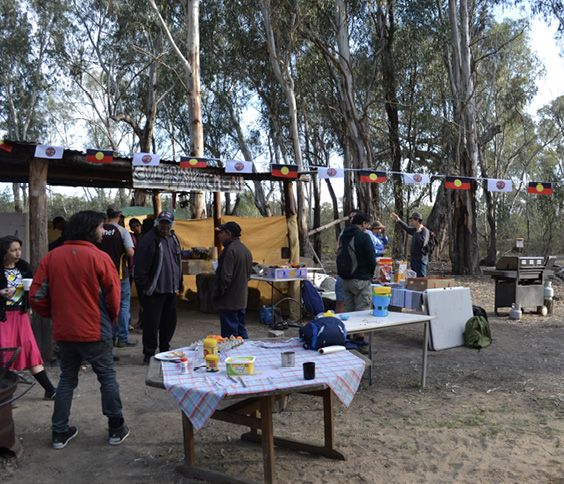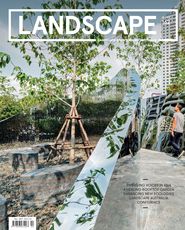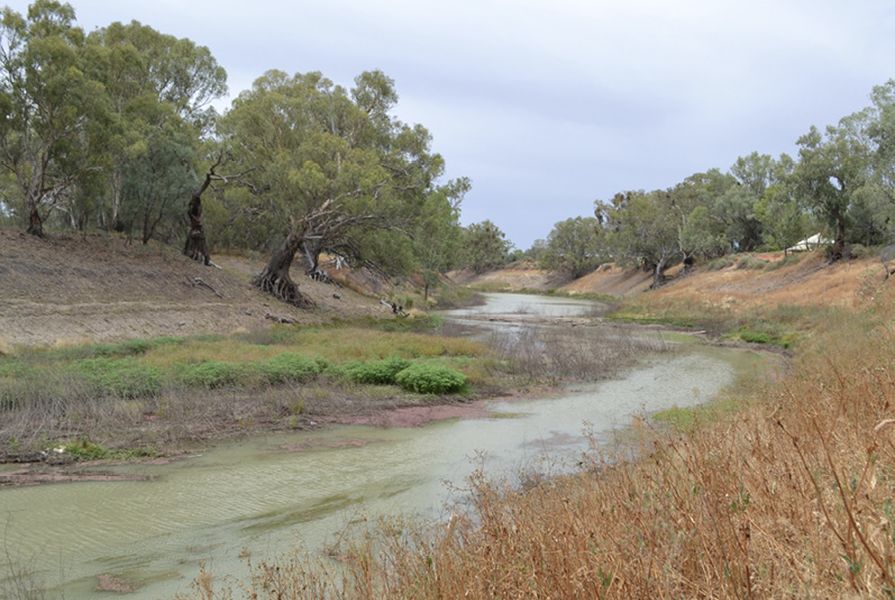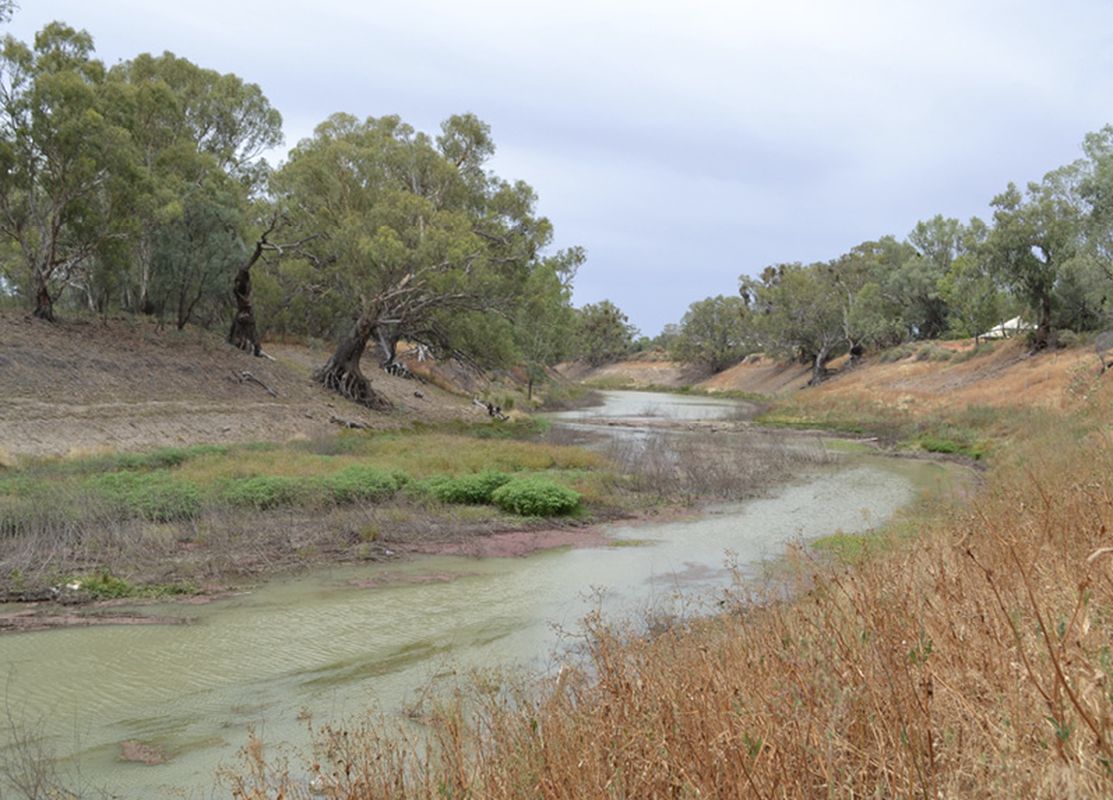For Aboriginal people, Country differs from the concepts of landscape or space in that it is inseparable from both notions of the human world and the environment. Australian ethnographer Deborah Bird Rose has described Country as “a living entity with a yesterday, today and tomorrow, with a consciousness, anda will toward life … Country is not a generalised or undifferentiated type of place,” something ‘over there’ to be drawn or operated on. Rather, it is a concept in which the “values of life are pre-given … ”1 And in the words of place-based learning scholar Margaret Somerville: “Country is not place, but nor is it nature or environment. There is no separation of human activity and the natural world … Country never loses the sense that the original creation story is still always there, in the meaning of that particular location, in the shapes of the land, in its ongoing stories … ”2
The act of “deep listening” is central to understandings of Country.3 Built environment academics Anoma Pieris and Janet McGaw point out that at “the heart of deep listening lies a commitment to respecting Indigenous knowledge systems as different yet equal. Where Western academic discourse favours text, Indigenous knowledge has traditionally been communicated through performative practices such as Story, dance and song … deep listening begins with sharing stories and offering an opportunity for each party to situate themselves in the story of the other. It is a process that takes time and requires patience.”4
Landscape, as a constructed concept, separates humanity (including the practitioner) from the medium – the world external to the human. This often positions landscape as something that can be separated and operated on. This idea of landscape, as separated and separable, has been much documented and is one that has contributed to the commodification of the environment – a situation whose consequences are now playing out in one of Australia’s largest landscapes, the Murray-Darling Basin, and in the particularly dire state of the Darling River.
Issues of governance across state boundaries in south-eastern Australia forced the establishment of the Murray-Darling Basin Authority in 2008 and the implementation of the Murray Darling Basin Plan in 2012. In the eyes of the government, the plan must give equal weight to the environmental, social, and economic impacts of irrigation, with the result that we now have agricultural operations running on global capital – including Cubbie Station in south-west Queensland (the largest irrigation property in the southern hemisphere) allegedly competing with social and environmental water use. This has resulted in a situation where the condition of the majestic Darling River has been reduced to a pathetic dribble. Once an ephemeral system rising and falling, spreading water across a floodplain up to eighty kilometres in width, the river is now largely a controlled minimal flow, confined to running well within the channel of its “banks.”
At the heart of this lies the separation of humanity from landscape (including water), with disastrous implications for the communities that physically and culturally rely on the river. Barkandji elder and Wilcannia man, Badger Bates, writes evocatively of this situation: “When they take the water from a Barkandji person, they take our blood.”5 Badger’s words eloquently capture the spirit of Country described by Deborah Bird Rose.
Agricultural practices in the upper catchment of the Murray-Darling Basin have had a real and devastating impact on Aboriginal communities and Country along the Darling River and beyond, irrevocably damaging the health, wellbeing and cultural identity of traditional owners who have fostered a mutually nourishing relationship with the river for millennia. The unfolding environmental, social and cultural tragedy exemplified by the recent mass fish deaths at the town of Menindee in the far west of New South Wales highlight the consequences of considering landscape as separate from humanity.
The multi-dimensionality and entanglement inherent in the concept of Country allows for an alternative mapping of the Basin and an introduction to the Barkandji people’s story of the Darling River and its creation.
Sophia Pearce’s Barkandji Story brings an alternative perspective to the ubiquitous aerial view, a view that serves to further reinforce our separation from (the) landscape:
The Ngatjinngulu Parrintji is the story of two Ngatjiis travelling and making our Country. Ngatjii is the Barkandji serpent of creation and nngulu means two in Barkandji language. One was called Kuluwirru and the other, Watranyurinya. Watranyurinya went north while Kuluwiiru travelled to Wirtiga (Mt Manara Kunjas Country). Here the emu lost his wings, creating the stories of the crow ancestor (a major demigod in my Kunjas clan) and the two women, who eventually travel and make their own stories travelling, ending up in South Australia.
Natjinngulu Parrintji created my Country, Kirree Kira, and in their travels they created the waterholes and trees – our food – guarded by deities and rituals, enabling our old people and ancestors to recognise us. So they named these places in our language. W hen Ngatjinngulu met underground they mated. The body fluids from the mating of the giant serpents created wet marshes and underground soakage points, hence the sacredness of these stories can often belong to men. The language of mating describes our body parts and their relationship to all living things. These stories of Country (territory or landscape) explain our cultural responsibility to care for and protect all of our sacred places.6
Story has been described as a “spiritual power that is ubiquitous in particular persons and places … an essence that is immutable” and which is enmeshed within the concept of Country through a living relationship: ‘to be’ is to know one’s Story and to enact it ‘on Country.’”7 Country is both a way of knowing the world and of being in it. It has its own inherent protocols that are specific but generalisable to an extent. In orienting oneself to Country, transformative thinking is required. Orienting oneself to Country requires a transformation in thinking and the adoption of an Indigenous-led approach.
In this approach, storytelling is enabled through “yarning.”8 The yarn is often the vehicle for story,9 and it affords each party the opportunity to locate themselves in the story of the other.

Storytelling through yarning at an Interpretive Wonderings workshop, held at Culpra Station in rural New South Wales in 2015. The workshop was a collaboration between Culpra Milli Aboriginal Corporation, Sophia Pearce (La Trobe University), Sven Mehzoud (Monash University), Jock Gilbert (RMIT University) and Campbell Drake (University of Technology, Sydney).
Image: Jock Gilbert
An understanding of Country then is dependent on the unfurling of the understanding of one’s part in it and can only be gained in relation to the parts of others engaged through the yarn. It is a process that takes time and requires patience, as well as an inclination to listening deeply. It is a process in which knowledge is often shared during everyday practices – sharing a meal, cup of tea around a campfire. The yarn depends on an openness towards the chance encounter as much as on that directed towards an outcome.
In understanding Country as an orientation to a mode or model of practice, we are offered the opportunity to take up former prime minister Paul Keating’s injunction to learn “how to see Australia through Aboriginal eyes, beginning to recognise the wisdom contained in their epic story,”10 simultaneously enriching our own practices, landscapes and lives. In learning how to do so, we will be entering a mode of practice through which it will be impossible to reduce water to a resource, impossible to countenance the slow death of one of the world’s great rivers. It will be a practice that recognizes and respects the relationships between all things.
1. Deborah Bird Rose, Nourishing Terrains: Australian Aboriginal Views of Landscape and Wilderness (Australian Heritage Commission, 1996).
2. Margaret Somerville, Water in a Dry Land: Place-Learning Through Art and Story (Routledge, 2013).
3. Janet McGaw and Anoma Pieris, Assembling the Centre: Architecture for Indigenous Cultures (Routledge, 2015).
4. ibid.
5. William “Badger” Bates, “When they take the water from a Barkandji person, they take our blood,” The Guardian website, 26 July 2017, www.theguardian.com/commentisfree/2017/jul/26/when-they-take-the-water-from-a-barkandji-person-they-take-our-blood (accessed 18 March 2019).
6. An excerpt from Sophia Pearce’s Barkandji Story belonging to Barkandji people.
7. Janet McGaw and Anoma Pieris, Assembling the Centre: Architecture for Indigenous Cultures, (Routledge, 2015).
8. Sophia Pearce, “Kanyitas Way,” unpublished Masters Thesis, Charles Sturt University, 2013.
9. Yarning is a form of conversation that holds story for Indigenous people. When people get together, conversation begins with yarning about family; about kinship, about culture; about Country. Often conducted spatially in a circle, the yarn can also tend to circularity in that it loops back on itself repeatedly in an iterative way. Yarning facilitates knowledge exchange, recognizing the role of elders and matriarchs and ensuring responsibilities to show respect to and maintain a reciprocal relationship with human beings, animals, plants and places.
10. Sophia Pearce, “Kanyitas Way: a Reflection on Yarning,” unpublished Masters Thesis, Charles Sturt University, 2013.
11. Redfern Speech (Year for the World’s Indigenous People)delivered in Redfern Park by then Prime Minister Paul Keating, 10 December 1992.
Source

Practice
Published online: 1 Aug 2019
Words:
Jock Gilbert,
Sophia Pearce
Images:
Jock Gilbert
Issue
Landscape Architecture Australia, May 2019












